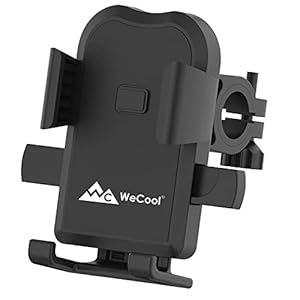
Within the tech world that’s regularly growing, recognizing this perform could be a determinant of triumph or defeat.
Many are left scratching their heads when designing environment friendly, efficient embedded IoT systems.
Sensors in IoT embedded system design are a vital side — usually ignored
Discovering appropriate sensors to your design isn’t simple. But it surely’s what separates a median system from a top-performing one.
Navigating by way of good sensor choice and integration could be difficult certainly.
On this put up, you’ll find out about sensor varieties, advantages, challenges, and future developments for industrial IoT strategy.
Sensor Varieties in IoT Embedded System Design
The huge Internet of Things (IoT) community integrates bodily units into the digital realm. This integration is principally reliant on sensors and embedded techniques.
What’s an Inbuilt Temperature Sensor?
These mild sensors are integral to quite a few IoT applications, notably these associated to local weather management or industrial processes. They monitor environmental circumstances and modify system operations accordingly.
Movement Sensors
Movement sensors are important for safety techniques, automation, and consumer interplay. These establish motion inside their scope, instigating particular actions primarily based on related information and pre-established guidelines.
Gentle and Proximity Sensors
Sensors that detect mild assist handle power consumption by adjusting lighting ranges in response to ambient circumstances. Conversely, proximity sensors acknowledge when objects method a sure distance from them – this perform is significant for security precautions in industrial environments or interactive experiences with shopper merchandise.
Sensing Expertise Performs a Position in Microelectromechanical Programs (MEMS)
Microelectromechanical systems (MEMS), which merge mechanical components with electronics at a microscopic scale, additionally extensively use sensing know-how. MEMS suppliers, sensor firms, and web applied sciences create highly-sensitive units appropriate throughout varied industries, together with the automotive sector, by way of general-purpose computing embedded techniques work whereas remodeling modern embedded system designs.
This synergy between semiconductor companies‘ embedded software program and {hardware} options permits trendy embedded techniques to assist IoT performance extra successfully than standard ones, thereby growing sensor adoption charges throughout a number of markets comparable to Industrial IoT APAC represents an rising market the place these developments could be noticed prominently attributable to service suppliers’ curiosity in integrating superior tech into current infrastructure.
All these developments contribute in direction of creating an enriched IoT context whereby every particular person’s expertise is customized due to environment friendly information assortment strategies enabled by way of a various vary of important sensor varieties utilized in completely different situations.
Challenges Confronted When Implementing Sensors in IoT Embedded Programs
Incorporating sensors into an IoT-enabled good embedded system presents its distinctive challenges. The first concern for a lot of embedded techniques is energy consumption.
The truth that these techniques usually function on battery energy accentuates the necessity for energy-efficient options. Steady information transmission from sensors can quickly deplete batteries, resulting in frequent replacements or recharging – a process which may be impractical in industrial IoT settings the place units are deployed remotely or at inaccessible areas.
Other than this, sign interference additionally poses a major problem
In an setting remodeled by standard embedded techniques to assist IoT performance, a number of units would possibly perform concurrently inside proximity. This situation may result in overlapping indicators and potential misinterpretations of information attributable to cross-talk between varied sensor varieties utilized by semiconductor firms providing standard embedded system {hardware} providers. Trendy embedded techniques design requires cautious planning and methods for efficient system integration with service suppliers who continuously monitor the sensor market developments and developments.
Sensor Efficiency underneath Various Environmental Circumstances
One other complication when implementing humidity sensors into trendy designs is guaranteeing dependable efficiency underneath various environmental circumstances, comparable to fluctuating temperatures or various moisture ranges, whereas sustaining accuracy.
These obstacles underscore why MEMS suppliers, sensor firms, and web assets should present sturdy sensing know-how that performs a pivotal position right here however should face up to elements like temperature fluctuations or moisture ranges whereas sustaining accuracy.
As we discover future trends in sensor technology for IoT Embedded Programs, comparable to miniaturization and elevated accuracy with AI-driven options, these challenges will proceed evolving, demanding modern approaches towards their decision.
Finest Practices for Integrating Sensors into an IoT Embedded System Design
Integrating sensors into your IoT-enabled good embedded system could seem difficult. Nevertheless, following a number of greatest practices can simply rework modern embedded system techniques.
1. Comprehend Your Software Necessities
To start the method, it’s important to completely perceive your utility wants, figuring out key IoT performance and elements like energy consumption and value. This contains contemplating environmental circumstances which may have an effect on sensor adoption in industrial IoT or different contexts.
2. Select Appropriate Sensor Varieties
Deciding on applicable sensor varieties is essential when designing trendy embedded techniques supporting IoT functionalities throughout varied domains, comparable to general-purpose computing techniques or industrial functions. MEMS suppliers and semiconductor firms providing built-in {hardware} options are worthwhile assets whereas exploring this huge sensor market.
3. Preserve Equilibrium Between Energy Consumption And Efficiency
A stability between energy utilization and efficiency is pivotal in any profitable IoT implementation. APAC represents a super mannequin the place sensing know-how is significant in enabling environment friendly power administration methods inside these units with out compromising their purposeful necessities.
- Analyze the required working techniques integration wanted for the seamless functioning of the gadget networked inside bigger ecosystems.
- Inbuilt temperature sensors, amongst others, want cautious calibration to make sure optimum efficiency underneath various circumstances.
Concerns for Deciding on Applicable Sensors for an IoT Embedded System Design
The design of a sturdy, environment friendly, and efficient IoT-enabled good embedded gadget system hinges on fastidiously deciding on sensors. The selection made can considerably affect not solely the efficiency but in addition the reliability of your utility.
In essence, when deciding on appropriate sensors, a number of important elements want thorough consideration.
Sensor Dimension and Price: Balancing Wants with Finances Constraints
An optimum stability between measurement necessities and value constraints should be achieved. Compact but inexpensive options could function viable choices with out compromising purposeful wants or exceeding finances limits.
Precision versus Energy Consumption: A Delicate Commerce-off
- A excessive diploma of accuracy in sensing know-how performs a pivotal position in guaranteeing dependable information assortment, which drives decision-making processes inside trendy embedded techniques.
- Nevertheless, precision usually results in elevated energy consumption, which may pose challenges, notably if battery-powered units or industrial IoT applications requiring long-term operation are concerned.
Tailoring Sensor Choice In accordance To Environmental Circumstances:
Selecting sturdy sensors like inbuilt temperature ones can be useful in the event you’re designing a tool to be used underneath harsh environmental circumstances comparable to excessive temperatures or humidity ranges.
Future Developments in Sensor Expertise for IoT Embedded Programs
Sensor technology is considerably remodeling, notably inside IoT-enabled good embedded techniques. The evolution stems from a number of rising developments that promise to redefine how these good sensors function and work together with their environments.
Sensor Miniaturization
A key pattern shaping the long run panorama entails miniaturizing sensors. This course of entails creating smaller but equally efficient parts, an initiative pushed by main semiconductor firms and MEMS suppliers. Such developments facilitate integration into various units, together with these with restricted house – a vital issue as we transfer in direction of extra compact, environment friendly designs.
Enhanced Accuracy by way of AI
Past measurement discount, there’s additionally an elevated give attention to enhancing accuracy by way of Synthetic Intelligence (AI). On this regard, AI has confirmed instrumental in enhancing precision ranges throughout varied essential sensor varieties, comparable to temperature or strain sensors used extensively in trendy embedded techniques.
Fusion of Sensor Information
Along with particular person enhancements per se, one other rising pattern lies inside ‘sensor fusion’. It merges information collected from a number of sources, offering richer info than what may very well be obtained independently, thereby considerably boosting total system efficiency, particularly when deployed underneath industrial IoT contexts.
Quickly Evolving Position Of Sensors In Common Objective Computing Programs
The position performed by sensing applied sciences continues increasing at breakneck velocity, thanks largely to latest developments made potential by way of the assist acquired worldwide by service suppliers who precisely learn market dynamics, coupled with rising adoption charges witnessed particularly throughout the APAC area.
FAQs- The Position of Sensors in IoT Embedded System Design
What’s the position of sensors in IoT?
Sensors play a pivotal position in IoT by amassing real-time information from the setting, which is then processed and used to make knowledgeable selections or automate processes.
What are the sensors utilized in embedded techniques?
In embedded techniques, sensors like temperature, strain, movement, mild, and proximity are essentially the most generally used for particular duties.
What are embedded sensors in IoT?
Embedded sensors in IoT discuss with tiny units built-in into an object that accumulate and share information with different linked units inside an Web of Issues community.
What’s the position of sensors and actuators in embedded techniques?
Sensors collect details about environmental circumstances whereas actuators execute actions primarily based on this collected information. Collectively, they permit interplay between an embedded system and its environment.
And what’s subsequent? The longer term holds thrilling developments, comparable to miniaturization and AI-driven options that promise even better precision.
In essence: understanding the position of sensors in IoT-embedded units and system design is vital to unlocking new potentialities in know-how improvement.
Contact TechAhead at present for all of your IoT app improvement.
Featured Picture Credit score: Picture by Erik Mclean; Pexels; Thanks!
Trending Merchandise



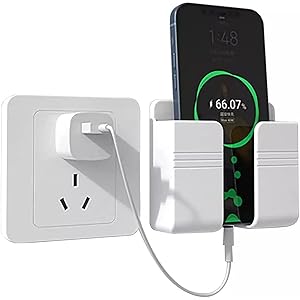
![CRATIX 360°Rotatable and Retractable Car Phone Holder, Rearview Mirror Phone Holder [Upgraded] Universal Phone Mount for Car Adjustable Rear View Mirror Car Mount for All Smartphones](https://m.media-amazon.com/images/I/410N7NZtIjL._SS300_.jpg)
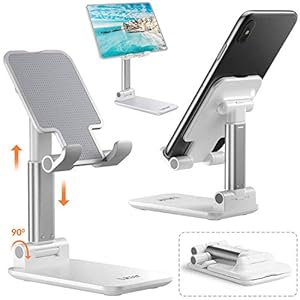
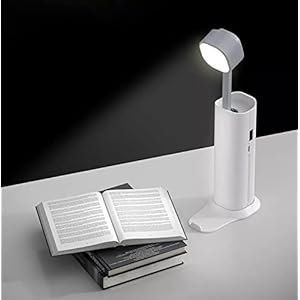


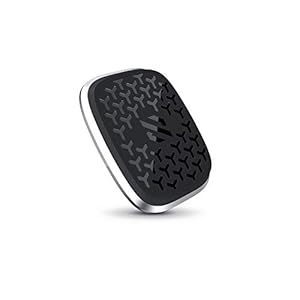
![Car Phone Holder Mount, [Military-Grade Suction & Super Sturdy Base] Universal Phone Mount for Car Dashboard Windshield Air Vent Hands Free Car Phone Mount for iPhone Android All Smartphones](https://m.media-amazon.com/images/I/51KK2oa9LDL._SS300_.jpg)
